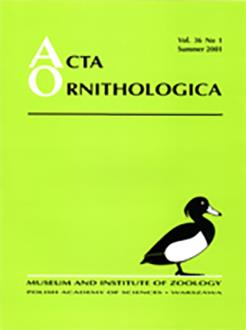Studies were carried out in 23 rural sample plots in NW Poland in 1985–1995 (total study area —5 117 km2, including 635 villages and other settlements). The density of the breeding population in the overall landscape varied between 2.2 and 16.2 nests/km2, and in built-up areas from 207 to 1303 nests/km2. In the first brood, begun in mid-May, the average clutch was 3.99 eggs; 47% of clutches contained 4 eggs, 23% – 3 eggs and 21% – 5 eggs. In the second brood the average clutch was 3.61 eggs. Clutches of 4 and 3 eggs accounted for 49% and 26% respectively of the total number of clutches.
49% of pairs from the first broods were also involved in second ones. Hatching success (number of young hatched compared with the number of eggs laid) was 94.3% in the first brood and 95.8% in the second. Fledging success (number of young fledged compared to the number hatched) was 97.5% and 95.1% respectively and final breeding success (number of fledglings compared to the number of eggs laid) was 91.9% and 91.2%. A statistical pair produced 5.3 young per breeding season.





